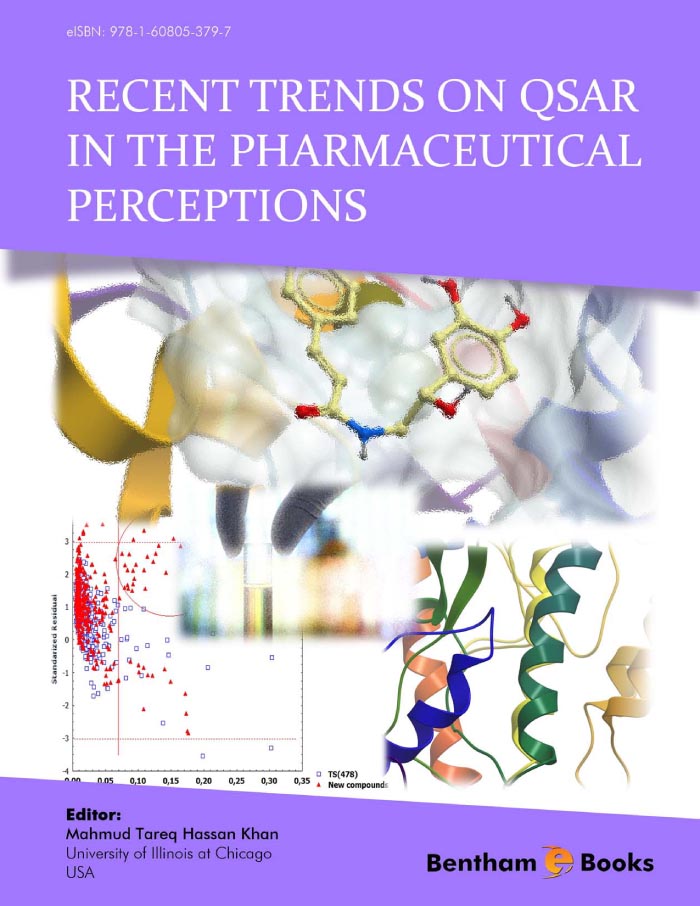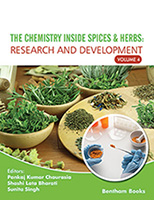The volume Recent Trends on QSAR in the Pharmaceutical Perceptions provides the readers an overview of recent discoveries and trends in the field of Quantitative Structure-Activity Relationship (QSAR). The QSAR is a very expansive field of research from biomedical science to drug discovery to target discovery to material sciences. This volume encloses fourteen equally high quality chapters from distinguished scientists around the globe with their extensive years of research in the field.
The volume aiming researchers who are centering their attentions to develop new approaches or tools and besides the scientists who are trying to appoint in deciphering their very explicit predicaments via QSAR methods.
In Chapter 1, Munteanu and co-workers introduced blood serum mass spectra based Proteome-Early Drug Induced Cardiac Toxicity Relationships which authors called Pro-EDICToRs. This approach opens a new door to the application of SP-MS graph parameters to toxico-proteomics in the near future. The Chapter 2, authored by Duda-Seiman et al., deals with the calcium channel blockers, their past and future.
Chapter 3 covenants about antimicrobial peptides (AMPs). Here in this chapter authors Avram and co-workers presented sets of pharmaceutical descriptors to perform QSAR analyses and eventually which helped to develop number of AMPs also utilizing computational mutagenesis.
Gavernet et al. in the chapter 4, overviews recent report on the developments of new anticonvulsants utilizing different in silico approaches, like Comparative Molecular Field Analysis (CoMFA), Chemical Graph Theory, Molecular Docking, Similarity Measures, Pharmacophore postulation and Virtual Screening.
In the chapter 5, Cordeiro and co-workers explained how to bridge the gaps between the chemical and biological spaces utilizing QSAR and three-dimensional (3D) molecular descriptors.
Luan and Cordeiro in their chapter (#6) wrote a comprehensive overview of QSAR modeling in the rational drug design with real life exmaple and explaining the each steps involved in
Fujisawa and Kadoma in their chapter 7, introduced method to predict cytotoxicity through QSAR modeling using quantum chemical descriptors, like the highest occupied molecular orbital (HOMO), the lowest unoccupied molecular orbital (LUMO), etc.
Sivakumar and Doble in chapter 8 demonstrated the example of ANN-based QSAR method for developing prostaglandin H2 synthase or cyclooxygenase (COX)-2 inhibtors.
In chapter 9, Talevi and co-workers briefly reviewed recent studies related to similarity coefficients and different fingerprinting systems and feature weighting schemes used in similarity assessment. Applications of these advances in chemoinformatics are also briefly discussed, including similarity-based virtual screening, assessment of chemical libraries diversity and applicability domain estimation based on similarity measures.
In chapter 10, Casañola-Martin and co-workers surveys the results achieved in the elucidation of new tyrosinase inhibitors by using QSAR and TOpological MOlecular COMputational Design-Computer-Aided Rational Drug Design (TOMOCOMD-CARDD) approach. In the chapter authors described the approach in detailed with several examples from their published works.
Taboureau and co-workers in their chapter (11) introduced the QSAR approaches for rational peptide design which has been successfully used for the prediction of the major histocompatibility complex (MHC)-peptide binding and for the optimization of AMPs.
Saleh and co-workers in chapter 12 presented some basic considerations concerning QSAR including history and some important descriptors, like electronic parameters; hydrophobic (Lipophilic) parameters and steric parameters. Finally they presented some applications of using these parameters.
Most of the authors in this volume agreed that the major challenges of this emerging field is to evaluate the models in real life in a reasonable manner and then to put them together into practice successfully. Nevertheless it may be tough, but the prospects evidently promising! I anticipate readers will take pleasure going through the volume.
Mahmud Tareq Hassan Khan,PhD
Tromsø, Norway
January, 2011





